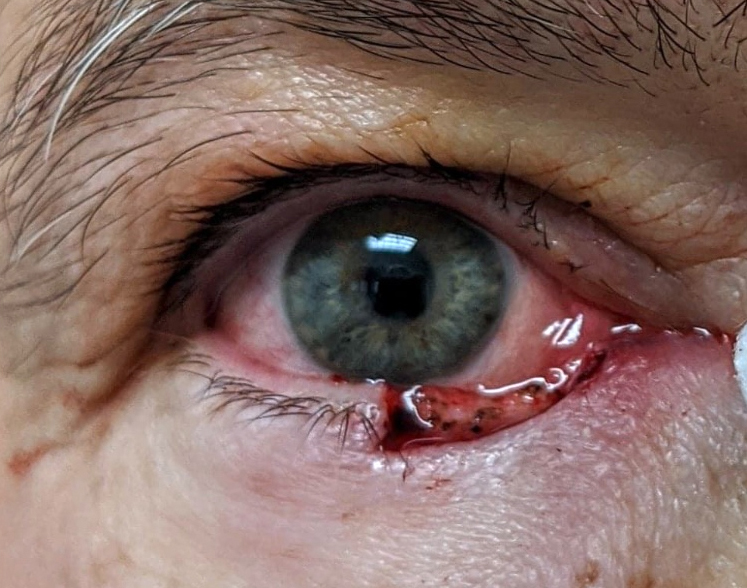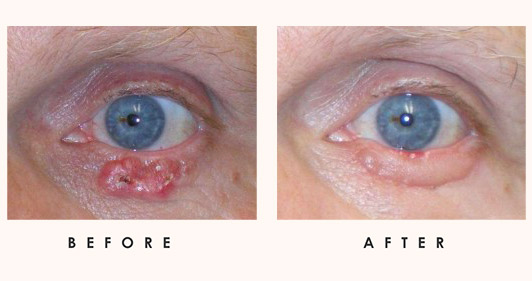Basal Cell Carcinoma
Jump To
The most common types of skin cancers are basal cell carcinoma and squamous cell carcinoma. Both types tend to grow locally and do not metastasize to distant parts of the body. Basal cell carcinoma occurs forty times more frequently than squamous cell carcinoma.
Did You Know?
Human skin is very vulnerable to ultraviolet-B (UV-B) radiation. Exposure to UV-B results in damaged skin, as it becomes red and sunburned. Essentially, risk of skin cancer grows with every sunburn. Fair-skinned people are more sensitive to UV-B and will develop skin cancers more often than dark-skinned. Eye cataracts are associated with UV exposure. Younger people are at greatest risk, since serious sunburns during the originally 18 years are thought to increase the risk of cancer by more than 50%. For these reasons, protective clothing, shade, and high SPF sunscreen, sunglasses/contact lenses are imperative.
Pigmented Basal Cell
 Basal and squamous cell carcinoma are mostly slow growing. If they are detected early and treated quickly, there is a strong likelihood of complete tumor removal. This is thought to minimize the amount of tissue affected by the carcinoma.
Basal and squamous cell carcinoma are mostly slow growing. If they are detected early and treated quickly, there is a strong likelihood of complete tumor removal. This is thought to minimize the amount of tissue affected by the carcinoma.
Basal cell is the most common eyelid malignancy and occurs most commonly on lower lids, followed by medial canthus and upper eyelid.
Mohs surgery is a common surgical procedure used for the treatment of skin cancers. The goal is to remove the cancer, minimize recurrence, and preserve as much healthy skin as possible. Depending on the extent of the cancer, reconstructive surgery may then be necessary.
At Idaho Eyelid & Facial Plastic Surgery, our surgeons are specifically trained in reconstructive oculoplastic surgery. We have extensive experience dealing with surgical management of tumors. A variety of these surgeries involve skin grafting and precise stitching. While some patients require a meticulous two-layered closure to ensure the lashes don’t grow in towards the eye as it heals, others may require skin grafting to ensure full closure of the wound. Patients should have realistic expectations about eyelid skin cancer, surgery, recovery, and scarring. A significant effort is always made to minimize scarring and obtain optimal cosmetic results. Follow-up appointments are critical to ensure skin cancer does not recur. Early detection and prompt treatment is imperative.



